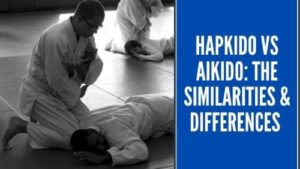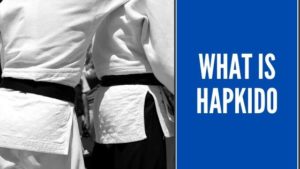The International Combat Hapkido Federation (ICHF) describes Combat Hapkido as a self-defense system that is versatile and provides effective results in realistic situations. Its versatility comes from the combination of different techniques, all geared at ensuring self-protection. You get to combine kicks, pressure points, disarming techniques, joint locks and ground survival to achieve results.
In our article below, we will provide a better understanding of Combat Hapkido, and some techniques you need to learn.
History of Combat Hapkido
Combat Hapkido is the brainchild of John Pellegrini who started it in 1990. John holds the distinction of being one of the best hand-to-hand combat trainers. His resume is quite impressive; he has skills in judo, karate, Taekwondo, and Hapkido. It does not end there; you can include Jeet Kune Do, Aikido, and counterintelligence self-defense as part of his skill set.
Combat Hapkido is an exciting combination of the old and modern. John does not credit himself with inventing a new form of martial art. According to him, he used modern concepts and scientific principles to come up with Combat Hapkido.
What differentiates combat Hapkido from the traditional Hapkido is the elimination of techniques that may not make much sense in modern self-defense. John, therefore, excluded things like meditation, jump kicks, acrobatic fall breaks, and use of traditional weaponry that one may no longer find in modern society. He also borrows certain concepts from disciplines such as boxing, jujutsu, Kuntao Silat and Jeet Kune Do.
The modern aspect of combat Hapkido comes in through the use of situations that apply in the real world. Students get to learn things such as weapons disarmament, combat throws, use of Dan Bong and canes, as well as ground survival.
Related: All the Hapkido Belts & Ranks Explained
Famous Combat Hapkido Techniques
The basic principles of Combat Hapkido according to John Pellegrini are:-
- Ensuring the opponent is compliant before attempting to control him. You achieve compliance by putting the person in a painfully uncomfortable position. You also incorporate different movements, body positioning, and destructive striking to gain leverage over your opponent.
- You use the brush, trap and strike strategy to achieve compliance by executing maximum pain.
- Brush means to deflect or parry using ducking, side-to-side movements or your strikes
- Trap meaning you immobilize by holding parts of the opponent’s body including arms, fingers or wrist. You can also incorporate the close quarter’s combat zone to gain an advantage
- Strike where you use a blow or hard hit to specific targeted areas such as the head or kidney area.
When you achieve the three above, you can now joint lock your assailant. There is no rigidity with regards to achieving the joint lock, and can employ variations to the technique.
Combat Hapkido Techniques You Should Know
Hammer-Lock Escort
To achieve hammerlock escort, follow the steps below:-
- Take the combat Hapkido awareness stance or fighting posture
- Raise your arms slightly with the palms open
- When your opponent strikes, avoid the punch and take it out of the way with your arm. In this way, he cannot throw another punch
- Strike his face with the heel of your palm
- Do not allow the opponent to recover, instead swiftly get into the hammerlock position
- You have two steps to achieve the perfect lock by:
- Place your left forearm against your opponent’s right one. Hold his wrist, while pushing the arm back, and raise the elbow until it is behind his shoulder.
- Trap your opponent’s wrist behind his body and apply pressure on the upper arm using your left forearm. Wedging the sharp part of your forearm into your opponent’s elbow will achieve excellent results.
- You can now let go of the wrist and free your hands for other self-defense moves such as the throat grab. The scientific reasoning is to use your opponent’s arm as a lever, your body as the base, and the fulcrum is your forearm, shoulder and upper arm.
Related: What is Hapkido the Martial Arts
S-Lock And Ambar Takedown
- Take the combat Hapkido awareness stance or fighting posture
- Deflect your opponent’s right punch inwards using your lead hand
- Trap the wrist and stun him with a head punch using your left palm
- Immediately transition to the Ambar takedown using two methods.
First technique – Ambar Takedown
- Maintaining the best grip, use the edge of your other hand on your opponent’s upper arm
- Put pressure on the triceps tendons, while pulling his wrist up to your hip area
- At this point, he should lose balance, allowing you to use your weight to drop him face-first onto the ground
Second technique – S lock
- Push your opponent’s trapped wrist using an upward motion behind him.
- Turn the arm clockwise by bending the elbow and twisting the wrist to achieve the desired shape.
- Tucking his elbow into your body will give you the leverage.
- Use pulling and twisting moves to compress the wrist. Think of it as you would, if you were wringing a rag.
- Ensure complete immobility by placing your knees on his head or kidney area.
Combat Hapkido Training; Level of Difficulty
Combat Hapkido is excellent for anyone who wants to learn self-defense. It is suitable for men and women of all ages. You do not require very high levels of physical fitness to learn some of the techniques. Consult your physician before you start taking any of the lessons.
Combat Hapkido has a belt ranking system; the higher your ranking, the more difficulty and number of techniques you have to learn. Different trainers have different content for each level, but any certification is through the ICHF headquarters.
Students must, however, learn the core basics for each rank no matter who or where you are doing the training. It is an enjoyable discipline, which provides effective ways of coping in real-life danger situations.
Combat Hapkido is an excellent way of learning how to defend yourself using real-life scenarios. You learn how to disable your opponent through the use of various techniques, and the use of pain to achieve compliance.
You get to learn how to use weapons such as canes for self-defense purposes. Most importantly, the course teaches you how to disarm weapons. It is truly an excellent skill to learn in this day of easy availability and access to handguns by the wrong people.






